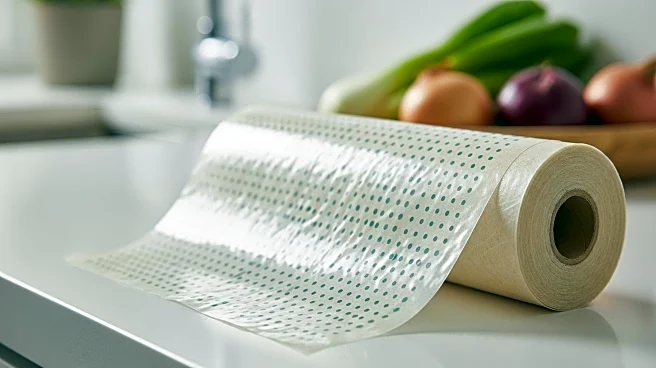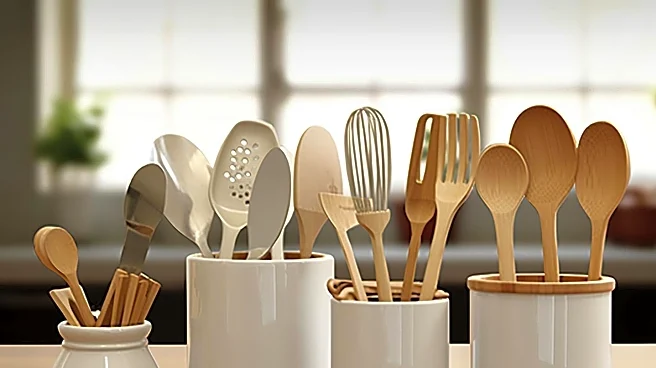What's Happening?
Kitchen experts are advising consumers to replace certain kitchen tools to avoid potential health risks associated with microplastics and bacteria. Over time, tools such as plastic cutting boards, storage containers, and nonstick pans can degrade, releasing microplastics into food. Additionally, items like wooden utensils and sponges can harbor bacteria if not replaced regularly. Experts suggest opting for alternatives like glass storage containers and stainless steel or enamel bakeware to enhance kitchen safety and hygiene.
Why It's Important?
The advice to replace certain kitchen tools is significant due to the potential health risks posed by microplastics and bacteria. Microplastics, which can leach from degraded plastic tools, have been linked to various health concerns. Bacteria growth in porous materials like wood and sponges can lead to foodborne illnesses. By replacing these items, consumers can reduce their exposure to these risks, promoting better health outcomes. This shift also encourages more sustainable practices by reducing reliance on disposable or non-biodegradable materials.
What's Next?
Consumers are likely to see an increase in the availability of alternative kitchen tools made from safer materials. Manufacturers may respond to this trend by developing more durable and eco-friendly products. Additionally, there may be a rise in consumer education efforts to raise awareness about the importance of regularly updating kitchen tools for health and safety reasons. This could lead to a broader shift in consumer habits towards more sustainable and health-conscious choices in the kitchen.
Beyond the Headlines
The move towards replacing certain kitchen tools reflects a broader trend of increased consumer awareness about health and environmental issues. As people become more informed about the impact of microplastics and bacteria, there is a growing demand for products that are both safe and sustainable. This trend may also influence other areas of consumer goods, encouraging manufacturers to prioritize health and sustainability in their product designs.










